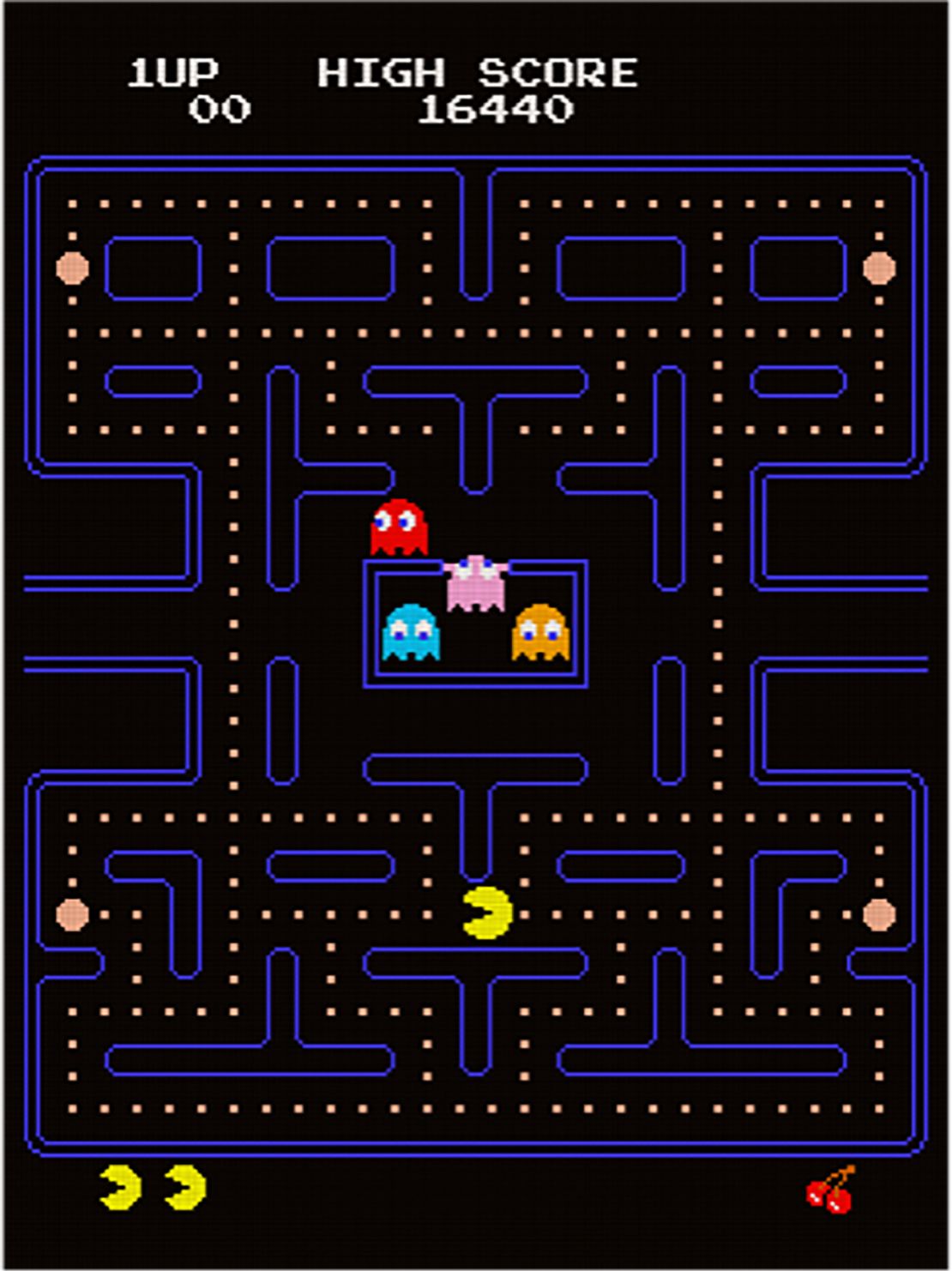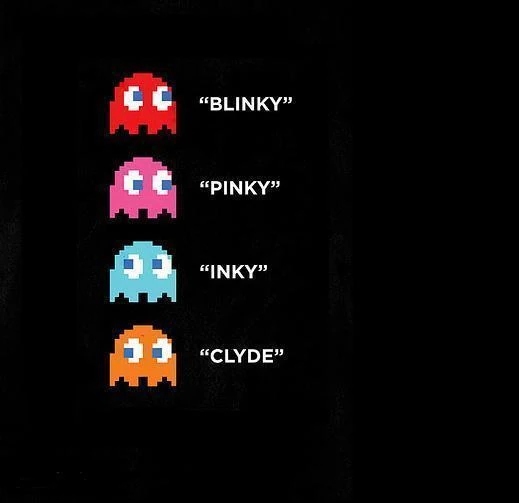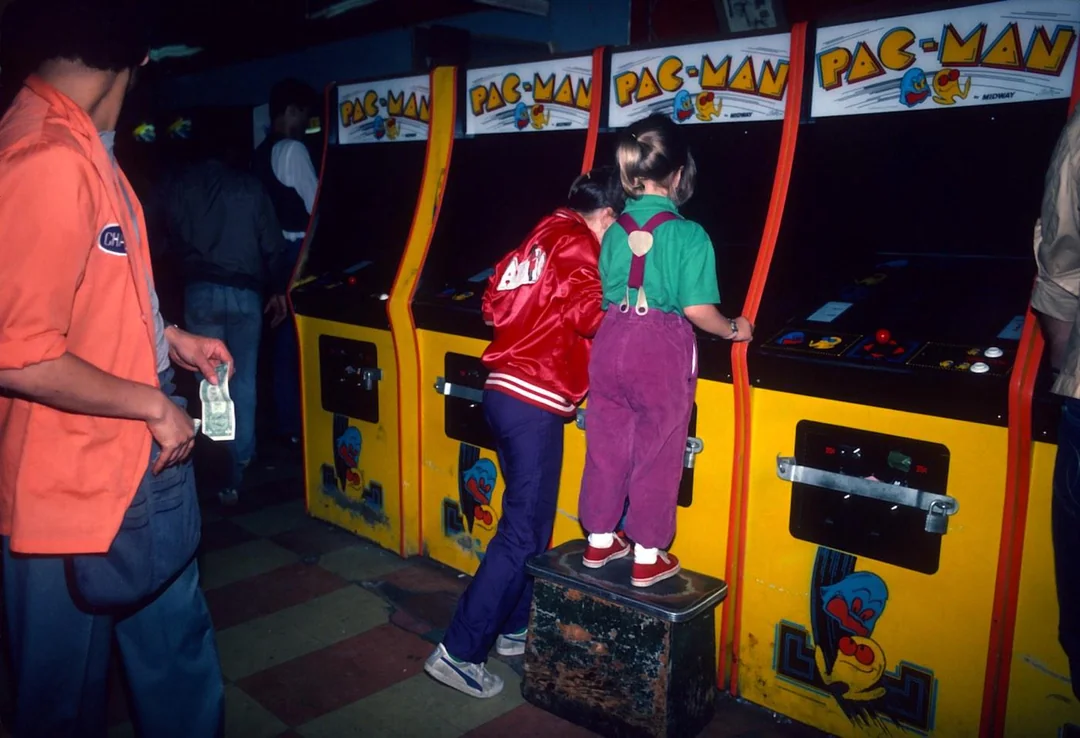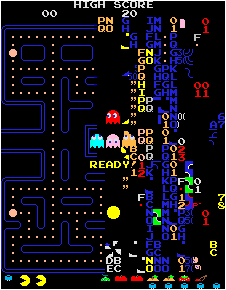Before there were open-world games, cinematic cutscenes, or battle passes—there was Pac-Man. And in the arcade-saturated world of the early ’80s, nothing ate quarters (or captivated imaginations) quite like this yellow, ever-hungry circle.
👾 The Birth of a Gaming Phenomenon

Pac-Man was born out of a simple yet revolutionary idea: make a game that appealed beyond just teenage boys. Developed by Toru Iwatani and released by Namco in 1980, Pac-Man (originally called Puck-Man in Japan) wasn’t about shooting aliens or racing cars. It was about navigating a neon maze, gobbling pellets, and dodging ghosts—each with a distinct personality.
The name Puck-Man was changed for the U.S. release due to obvious concerns that the “P” could be vandalized into an “F.” Thus, Pac-Man was born—a global legend.
🧠 A Simple Game with Complex Appeal
At first glance, Pac-Man is easy: eat all the dots and avoid the ghosts. But under the hood, the game features advanced AI for its time. The four ghosts—Blinky, Pinky, Inky, and Clyde—each have unique behavior patterns:
- Blinky (Red): Aggressively chases Pac-Man.
- Pinky (Pink): Tries to ambush him by heading to where he’s going.
- Inky (Blue): Uses a hybrid targeting strategy, making him unpredictable.
- Clyde (Orange): Wanders randomly, adding chaos.

This made the game feel almost lifelike—like the ghosts had their own personalities and grudges.
🎯 Designed to Be Different
Toru Iwatani specifically wanted to design a game that didn’t involve violence. Inspired by a pizza with one slice missing (which looked like a mouth), Pac-Man was about eating instead of fighting, cuteness instead of combat. He envisioned arcades where girls, kids, and casual players could enjoy themselves without the pressure of high-stakes combat or complex controls.
And it worked.
Pac-Man had:
- No guns
- No time limits
- No “Game Over” until YOU messed up
The maze-like design with its iconic blue walls, blinking dots, and pulsing sound effects created a hypnotic rhythm. It was easy to learn but nearly impossible to master.
🥇 Setting Records and Eating Quarters

Pac-Man quickly became the most popular arcade game of all time:
- By 1982, there were more than 400,000 machines worldwide.
- It generated over $1 billion in quarters in its first 18 months alone.
- It held a Guinness World Record for being the most successful coin-operated game of all time.
Arcade cabinets were placed in bowling alleys, grocery stores, pizza joints, and laundromats—anywhere someone might want to kill a few minutes (or hours).
📺 Pac-Man Fever: A Cultural Supernova
The game didn’t just dominate arcades—it infiltrated pop culture:
- Buckner & Garcia’s 1982 song “Pac-Man Fever” hit #9 on the Billboard charts and went Gold.
- The Pac-Man cartoon aired on ABC in 1982, the first animated series based on a video game.
- Merchandising exploded: T-shirts, lunch boxes, stickers, breakfast cereal, puzzles, plush toys, board games—you name it.
Pac-Man became the first true gaming mascot, predating Mario’s mainstream fame.
🌈 Easter Eggs & Level 256
While most players never got past Level 20, those who reached Level 256 hit the infamous “kill screen.” Due to an integer overflow bug, half of the screen became garbled, and the game became unplayable—a mythical moment in arcade history and a badge of honor among elite gamers.

💡 Why Pac-Man Worked
The game struck a chord because it was:
- Accessible: Anyone could walk up and start playing within seconds.
- Challenging: The difficulty scaled as you improved.
- Iconic: The sounds, colors, and characters were unforgettable.
- Fun to watch: It was a spectator sport long before Twitch was a thing.
🕹️ Pac-Man’s Legacy in Modern Gaming
Pac-Man laid the groundwork for:
- AI-driven enemy behavior
- Gender-inclusive game design
- Merchandising as a core gaming revenue stream
- Cross-media branding
And Pac-Man lives on. He’s appeared in:
- Dozens of spin-off games
- Super Smash Bros.
- Google’s interactive Doodle in 2010
- The film “Pixels” (2015), where he destroyed a city block or two
🤓 Fun Facts You Might Not Know
- The first “cutscene” in video game history was in Pac-Man, when he’s chased by ghosts and turns the tables in a comedic moment between levels.
- There is a perfect Pac-Man score of 3,333,360—achievable only by eating every pellet, power pellet, ghost, and fruit up to level 255.
- In Japan, the ghosts are named Oikake, Machibuse, Kimagure, and Otoboke, translating roughly to Chaser, Ambusher, Fickle, and Feigned Ignorance.
🎮 Final Thoughts: Pac-Man Was More Than a Game—It Was a Movement
Pac-Man wasn’t just a quarter-muncher—it was a trailblazer. It redefined who video games were for and what video games could be. With no weapons, no violence, and no need for instructions, Pac-Man showed us that simple design, fun gameplay, and a little personality could change the world.
If you grew up in the 80s, you didn’t just play Pac-Man. You lived Pac-Man.
